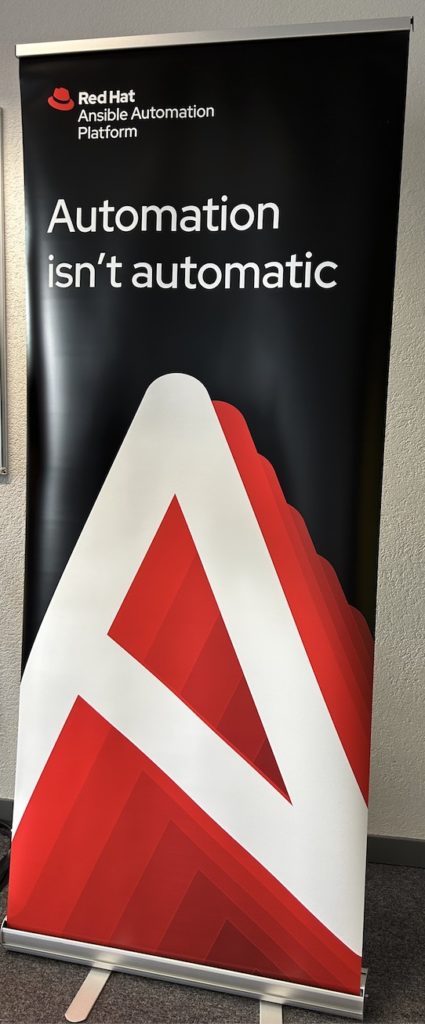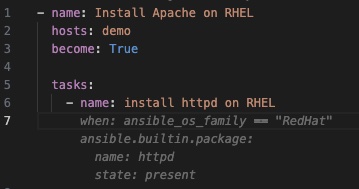I attended this tour from Red Hat to promote automation at Ansible automates roadshow with my colleague Arnaud Berbier. You’ll find his review of the journey here) in Geneva.
It was the third date from their tour. In case you’re interested in automation with Ansible there is 2 more dates in Germany.
- Frankfurt in October 17
- Munich in October 19

It started with Loïc Avenel who is the EMEA Manager in field product management for Ansible. He explained his vision of automation with 3 keys concepts which are to
- Think like software developers do in modern development
- Have an automation-first cultural mindset, and this start by us
- Leverage and share individuals skills and experience, by filling the talent gap and up skilling your team members
Loïc put emphasis in collaboration and gave some “facts” numbers to depict that without this. Many company failed to transform their IT and this number goes up to 70% from a financial analysis from Banque Cantonale de Genève.
He then shows 2 common ways enterprise does this. Some by updating gently their tasks to be automated (optimizing) and the other by changing totally their way to do things (transform). In fact, this is not bad, but doing both is better!
He leverages on a “Automation maturity curve” to explain his way to be more efficient for a successful transformation. And to resume his mind, an extra effort should be done at the beginning but at the end you’ll benefits more. And also more from the upcoming AI that everyone is talking about.
He assumes a lot of company already did the cultural shift to automate tasks, he calls that Day 0 / Day 1 and named this phase “Infrastructure as Code” but not really the next step for automation, he calls it Day 2 “Operation as Code” and consist in
- Standardize operation processes
- Go further in observability with remediations
As you may know, Red Hat is embedded in the big blue IBM and this Day 2 couldn’t come without something from them, the famous Watson with their “Watsonx code assistant” for generative AI code for plabook deployment, this magic is called Ansible lightspeed.
He also introduce the Event-Driven in Ansible that I can say is promising with all plugins and integrations. It consists on observability and automatic remediation directly in a playbook triggered on demand by specific events.

The presentation ended with some words about Ansible automation platform (replacing Ansible Tower). They push the concept farther with these extra features.
- Automation execution environments
- Automation mesh
- Ansible content collections
- Ansible content tools
- Red Hat Insights
- Automation services catalog
- Automation Hub
We then had talks from Bertrand d’Hérouville an Edge Specialist Solution Architect. He presented an extension to automate with Ansible with Edge devices and he took his home automation as an example.
The last talk before the lunch was from a Red Hat partner. The presentation was with Jean-François Pujol from Cisco and how he used Ansible to manage Network devices, another great success story!
Just before noon, it was the time for a very nice lunch buffet. Thanks Red Hat and Partner for this event.
During the lunch, I was thinking about what we saw the morning. It was a lot of theory and not enough concret usage or demos. Fortunately, we had one of the best slide of the day.

Demos will now start!!
Christian Jung from Red Hat did a small poll with hand raised to know if everyone in the room was familiar or not with playbooks. It was like one third people in the room, it surprises me a bit, but well. He started his demo with writing a basic playbook. And after a few minutes, he showed us lightspeed, a plugin for VS Code that analyze what you type and helps you developing faster. Below is an exemple at line 7.

After that, we had another successful use case with Ansible from Sylvain Chen. He explained his success story at Six. In an openShift environment and how he did manage to develop operators and used Ansible Automation Platform to do it.
The last talk was with RegData and the importance to protect data on on-prem or cloud infrastructure. By using a lot of features from Ansible like
- Generic roles
- variables management
- templating
This event was really great to know more about new features around Ansible. With for example lightspeed, Ansible driven-event or the new Ansible tower aka Ansible automation platform.
I recommend you to join the next events in case you would like to know more from Ansible.
Please find the external link here to Ansible automates roadshow 2023.
Thanks again dbi services for this opportunity.
![Thumbnail [90x90]](https://www.dbi-services.com/blog/wp-content/uploads/2025/05/martin_bracher_2048x1536.jpg)
![Thumbnail [90x90]](https://www.dbi-services.com/blog/wp-content/uploads/2024/03/AHI_web.jpg)
Amrita Technologies
27.09.2023Ansible is idempotent, which means that running the same playbook multiple times will not change the target system's state if it's already compliant with the desired configuration. This feature enhances predictability and safety.
Thanks for pointing out this key principle of Ansible, you'll find more keywords related to Ansible in the following link https://docs.ansible.com/ansible/latest/reference_appendices/glossary.html